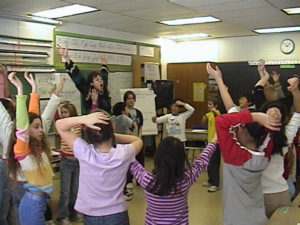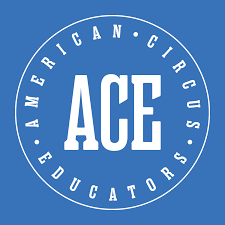From mid-September through mid-December, I am a teaching artist in six fourth-grade classrooms, twenty contact hours per classroom (theoretically). The project involves using performance modalities (usually as alternative learning strategies) to co-teach academic and social content, then facilitating the creation of an original piece about that content. I have been happily doing this project for 15 years.
Normally, I love this project and look forward to it every year. I love rediscovering the material through students’ experiences, I love mid-wifing their process of becoming artists, writers, performers; it is such an honor. I look for ways to grow and tailor my own process, and I get to a place where they actually embrace hard work, and then make big performance leaps—and I am going to go bold here and say every time.
This year, however, has been particularly challenging. I’m not quite sure why, but it seems the teachers don’t want a Teaching Artist to be there. It may be because we started too early in the school year. Or, perhaps they are feeling the pressure of new state regulations and requirements. It is quite probable that the resistance to my presence is because all but one of these teachers were not fourth grade teachers last spring. In addition to being a whole new ball game, they are not the original stakeholders of the project and are being required to participate without having been included in the development process.
Regardless, I was assigned to the schools in late August, and began in September. By the end of the first week, I realized I was walking on eggshells, tiptoeing around their resistance which seemed to deny me the ability to do what I’ve been hired to do in years past, something at the core of my teaching practice. I was unable to create rigor and joy. Rigor and joy are what, for me, define an artistic experience. They are at the core of what make possible a nine-year-old’s re-imagining of the self as Learner, Artist, and Writer!
Having had no part in the administrative process myself means I have had even less power than the teachers to make big changes to the situation. Early on, the only thing I could do was stay positive despite being ignored, delayed, and undermined, and supporting the teacher regardless of the situation. I wracked my brain every day to find ways, however small, of being supportive of their work in the bigger picture and thereby make the classroom experience better for everyone. This was what, ultimately, began to make a difference.
I began to find ways to bring small pockets of delight in to every class, like fireflies in cupped hands. Sometimes it would be presenting an idea with fun but gross examples, sometimes giving sections of the lesson as various silly characters, or twirling my invisible mustache when they were given a challenging idea, or revealing the secret treasure of what artists do that was ‘underneath’ whatever observation they had made. Slowly, slowly, the hard work for which silliness created space began to have an impact.
One room began to rejoice with me, running to set up the space and get in their spots for warm-up or rehearsal, working to finish up their other requirements so we could get to work, which they came to love. We scolded the set or props when they got in the wrong place.
Finally, in our fifth week, the atmosphere in each of the class rooms had grown lighter and more nourishing, such that the final productions were committed and energized and—most importantly—full of joy. At least for the kids. For the adults, I am not so sure; even though things definitely improved, I am not sure they are resolved for the teachers, especially in terms of the timing of the residency. For myself, I am grateful for the hard work and joy that we DID find.






